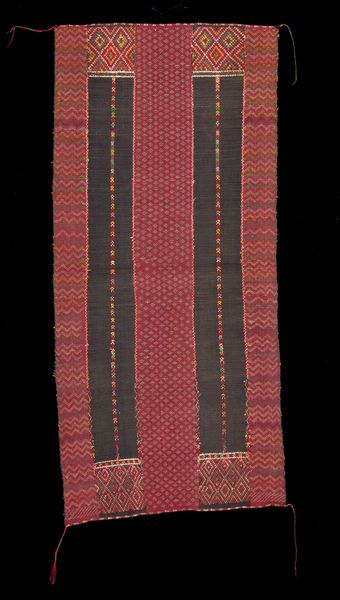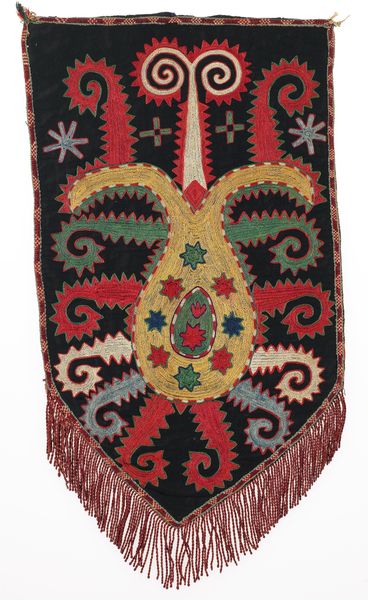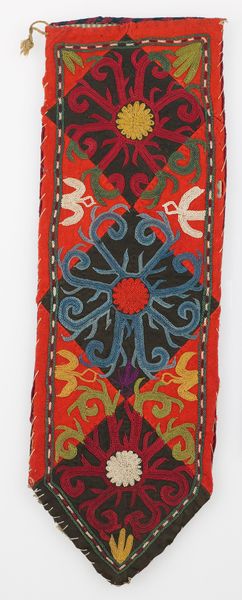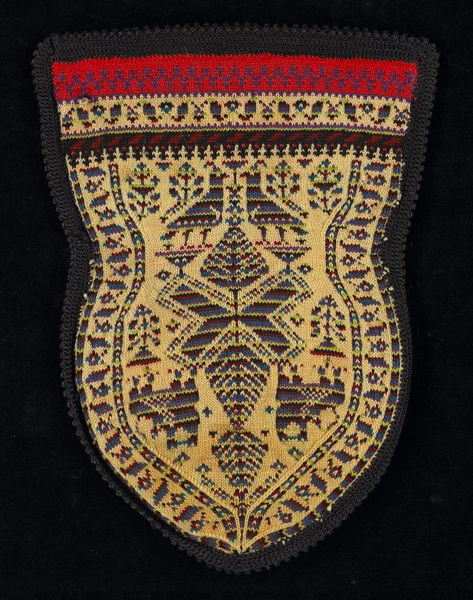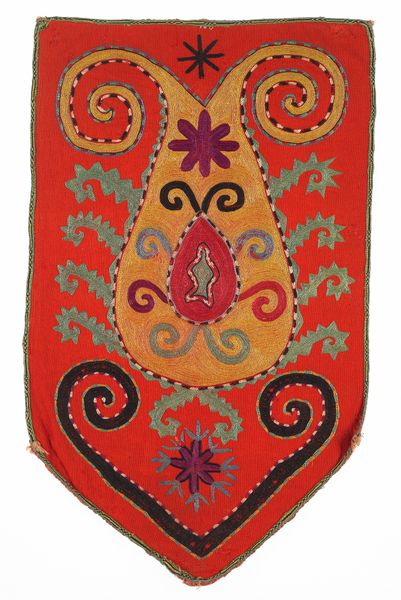
silk, textile, cotton
#
silk
#
pattern
#
textile
#
geometric pattern
#
geometric
#
pattern repetition
#
cotton
#
islamic-art
Dimensions: 47 x 3 3/4 in. (119.38 x 9.53 cm)
Copyright: Public Domain
Editor: Here we have a *Kamarband* from the late 19th century. It's a beautiful textile, likely made of cotton and silk, on display here at the Minneapolis Institute of Art. The repeated geometric shapes and vibrant colors create this effect of... ritualistic movement. What's your interpretation? Curator: Indeed, a textile isn't just woven threads, but woven meanings. The repeated motif, what we often call a "paisley," isn’t just decorative. Do you notice its teardrop form, bending, reaching? Consider the Kamarband’s purpose – a belt. It’s a visual embrace of the wearer. Editor: I hadn't thought about that aspect! So it's almost a talisman? Curator: In a way, yes. Cultures across Persia and India embraced this symbol. Some see in its form the seed of life, or a sprouting date palm – powerful symbols of fertility and growth, continuously reborn in its repeated patterns, influencing even Western fashion. Why do you think such an ancient symbol has endured? Editor: Maybe because it’s visually interesting but also, it’s that idea of continuous growth, almost meditative, as if its wearer can become more connected to the eternal and natural worlds through an everyday accessory. Curator: Precisely. The artifact speaks to cultural memory, weaving past beliefs and hopes into the present. Its symbols link wearers across time, cultures and continents to shared ideals of protection, renewal, and connection. Editor: So, it shows us how we use images to carry weight far beyond their aesthetic value! Curator: Exactly! Textiles like this remind us that what we choose to surround ourselves with carries histories, philosophies, and the enduring power of symbols.
Comments
No comments
Be the first to comment and join the conversation on the ultimate creative platform.








